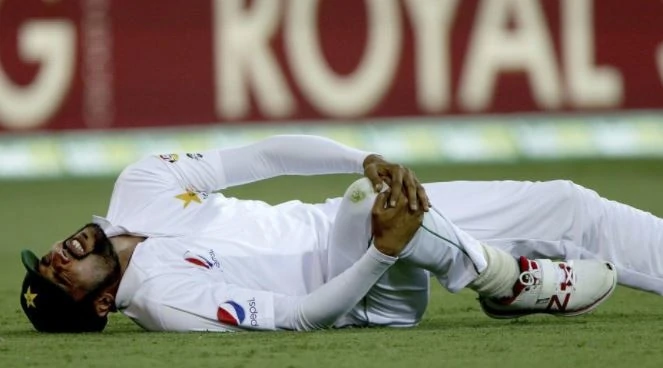Cricket is one of the most loved sports in our country. Despite the several benefits of playing sports like cricket, there is always a chance of getting hurt. You can get seriously hurt if you’re not careful when playing cricket. Cricket injuries are typically acute injuries that occur suddenly, such as torn muscle or being hit by the ball. They can also be chronic injuries that develop over time as a result of overuse. Today, I am going to tell you about the most common cricket injuries and the initial management of cricket injuries.
Common cricketing injuries
Cricket injuries include sprains, strains, fractures, bruising, and open wounds. Most of these injuries occur to the upper body, particularly to the hands and fingers. Overuse problems, such as back and shoulder injuries, are common among bowlers.
Here is the list of the most common types of cricket injuries-
- Rotator Cuff Injuries.
- Ankle Sprain
- Medial Meniscus Tear
- Groin Strain
- Thrower’s elbow (muscular or tendinopathy)
- UCL Sprain of the Elbow
- Hamstring Strain
- Lower Back Pain
- Hand/ fractures, dislocations
Initial Treatment For Sports Injuries In A Cricket Field
Each day, hundreds of athletes suffer acute injuries that can be treated safely at home with P.R.I.C.E. treatment. Acute cricket injuries have a specific mechanism of injury (being hit by a ball, planting and twisting, or colliding with an opponent) and immediate start of symptoms such as swelling, bleeding, pain, and probable deformity.
If there are signs or symptoms of a serious injury like deformity, extreme pain, and swelling, emergency first aid should be provided while keeping the athlete calm and still until emergency services arrive.
However, the P.R.I.C.E. therapy can be used to treat most acute sports injuries safely at home. The P.R.I.C.E. acronym stands for:
• Protection
• Rest
• Ice
• Compression
• Elevation
P.R.I.C.E. therapy should be followed for the first 48 to 72 hours after an injury. During this time, the goal is to keep the swelling in the damaged area under control, prevent future injury, and relieve pain.
Protection
Protection is the first part of P.R.I.C.E. therapy. The objective of protection is to safeguard the affected body area in order to prevent additional injury. It depends on the injured area what type of protection is used; it could be an aluminium splint, an ace bandage, a sling, protective tape, or an over-the-counter brace.
These things are used to keep the wounded body area safe from further damage. For example, someone who has recently suffered an ankle sprain may wear an ankle brace at first.
As the inversion (movement of the ankle/foot inwards) and eversion (movement of the ankle/foot outwards) can further injure the damaged area, a good ankle brace should protect the sportsperson from these movements while still allowing the ankle/foot to move up and down.
Rest
The second part of the P.R.I.C.E. principle is rest. Resting allows the body’s natural healing processes to take place without being interfered with by the movement of the wounded area. Any increase in movement of an injured tissue increases circulation to the area, which can lead to further injury and/or swelling.
When it comes to injuries to the lower extremities, crutches may be a good choice for resting the injured area. The patient should be placed on crutches if the pain is severe enough to cause a noticeable limp. Crutches allow the patient to move around safely while preventing further injury to the injured area.
Ice
The P.R.I.C.E. principle includes ice therapy as well. Ice can help to relieve the pain and inflammation caused by an acute injury. Icing is thought to be most beneficial if applied within the first few hours of an injury.
Apply a plastic bag filled with ice to the affected area, but do not place the ice bag directly on the skin. Instead, cover the ice bag in a towel or another material to protect it from coming into direct contact with the skin. Ice therapy should be done 10 to 20 minutes at a time and as often as every hour. If the patient’s skin becomes inflamed, red, and blotchy with the contact of ice, remove the ice pack and allow the region to warm up.
Compression
When the ice pack is removed, the damaged region should be wrapped in a compression wrap. The compression wrap works as a mechanical barrier to keep swelling in the damaged area to a minimum. There are a variety of compression wraps on the market, but the elastic or ace bandage is the most commonly used.
Elastic bandages are available in a variety of sizes (2″, 3″, 4″, and 6) and should be chosen based on the body part to be wrapped. A two-inch elastic bandage is ideal for a child’s ankle or an adult’s wrist/hand.
An adult’s ankle or elbow can be wrapped in three or four inch elastic bandages. A six-inch elastic bandage is ideal for applying compression to the thigh in the case of a quadriceps or hamstring injury.
The preferred elastic bandage for wrapping the knee, groyne, or shoulder area is a double-length elastic bandage. This double-length wrap is available in two widths: four and six inches.
Do not apply a compression bandage too tightly, as this can obstruct blood flow. If the bandage is causing pain, it’s probably wrapped too tightly; remove it and reapply it lightly.
Elevation
Elevating the wounded area of the body above the level of the heart can reduce swelling and pain. The immediate post-injury elevation is necessary to minimise the volume of blood flow to the wounded area. Elevation creates a descending conduit for fluid to return to the heart, reducing swelling and pain. The patient can elevate the wounded area by lying down and using a pillow.
Click here to contact for more information


